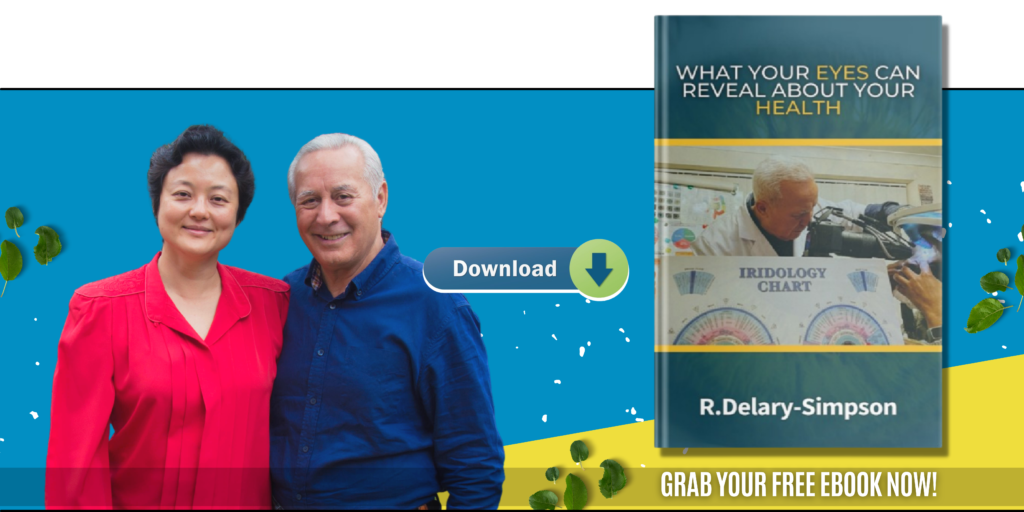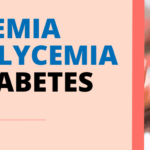10 Silent Symptoms of Diabetes
Diabetes might arise in a silent manner, and you may miss out on the symptoms. These are 10 common warning signs, usually silent or mild, that you may need to notice, as they might be an indication something is wrong with your body.
An increase in sugar in the blood does not necessarily lead to dramatic symptoms immediately. That is why a number of those who have type 2 diabetes, and even type 1, go unnoticed for months, or even years. With this early hint of diabetes, you can be able to detect it before it gets too late.
This article will teach you the 10 silent signs of diabetes and its causes and what to do in case you experience them.
Could you spot the early warning signs of Diabetes? In this important video, we reveal the 10 key symptoms that could signal the onset of diabetes, from subtle changes in your energy levels to unexpected shifts in your weight and thirst.
Catching these signs early can make all the difference in preventing serious health complications. Whether you’re concerned about yourself or a loved one, this video will arm you with the knowledge you need to take action. Tune in and learn what to watch for — early awareness is the first step towards better health!
What are the 10 early warning signs of Diabetes
Increased Thirst
In case you feel abnormally thirsty most of the time, despite drinking water, it is an indication. The elevated level of sugar in the blood causes water to move out of your tissues and you become dehydrated. This causes your brain to indicate more thirst.
What to look out for: persistent dry mouth, waking up during the night to consume water, or never being satisfied even after drinking.
Frequent Urination
All that additional thirst is accompanied with additional trips to the bathroom. Excess sugar is flushed out of your body by your kidneys in the urine. This implies that you might have to pee more frequently even at night.
Signs to watch out for: needing the bathroom on an hourly basis, waking up at night several times to urinate, or accidents due to the inability to hold it in.
Increased Hunger
With diabetes, you will feel hungry even after eating. In case glucose is not able to enter your cells due to the insulin issues, your body believes it is starving, and your hunger cues are activated.
What to look out for: strong cravings, incessant snacking, or feeling weak and shaky when there are more than a few hours between meals.
Fatigue
Constant tiredness is one of the most frequent yet easily-forgotten symptoms. When sugar fails to enter your cells to be used as energy sources, you end up exhausted. Throw in some dehydration due to frequent urination and it is no surprise that you are exhausted.
What to look out for: difficulty in making it through the day, sleepiness in the middle of an activity, or tiredness even when one has slept the entire night.
Blurry Vision
The elevated levels of sugar in the blood remove the fluid in the lenses of your eyes, making it difficult to see. This leads to blurred vision that is intermittent. Without treatment, elevated levels of blood sugar may harm the blood vessels at the back of the eye (retina) and result in blindness.
What to watch out for: trouble reading, problems with seeing street signs, or a sudden change in your prescription.
Slow-Healing Cuts and Infections
Diabetes may also make your immune system weak and blood flows slowly, thus wounds take a long time to heal. You may even experience increased skin infections, yeast infection or urinary tract infection.
What to look out for: open wounds that are unable to heal, recurring infections or small wounds that become serious.
Tingling or Numbness in Hands and Feet
Diabetic neuropathy is a condition that results when nerves are destroyed by high blood sugar over time. It may begin with tingling, numbness or burning in your hands and feet. This might prove to be mild at the outset, but it can turn painful and disabling when left untreated.
What to look out for: pins-and-needles, numb toes or fingers, or a difficulty with balance.
Unexplained Weight Loss
When you have diabetes, your body is unable to use glucose as a fuel. Instead it begins to use fat and muscle as a source of energy so that you end up losing weight despite eating the same or even more than usual. This mostly occurs in type 1 diabetes, however, in type 2 it can occur as well.
What to watch for: losing weight without trying, clothes becoming loose, or sudden changes in body shape.
Dark Patches of Skin
Insulin resistance can be signalled by dark velvety areas of skin, mostly on the neck, underarms and groin. This skin disorder is known as acanthosis nigricans and it is frequent in individuals with pre-diabetes or type 2 diabetes.
What to look out for: patches of skin that are thick, dark or a bit raised.
Mood Changes
Irregular blood sugar levels may impact your psychological state and emotions. Irritability, depression, or anxiety are reported by a lot of individuals with diabetic conditions (in particular, prior to diagnosis, when their sugar levels fluctuate a lot).
What to look out for: being sad, overwhelmed or angry without a specific cause.
Why These Symptoms Matter
Those symptoms, individually, may seem like nothing to worry about, but collectively, they can be indicative of diabetes. Early detection is the key as uncontrolled diabetes may cause such complications as:
- Heart disease
- Stroke
- Kidney failure
- Vision loss
- Nerve damage
The earlier you detect it, the earlier you get to control your blood sugar and safeguard your health.
Who’s at Risk?
Anyone can get diabetes, however, there are increased risks that you will get diabetes when you:
- Are overweight or obese
- Possess a family history of diabetes
- Are more than 45 years old
- Had gestational diabetes in pregnancy
- Have a sedentary life
- Suffer from high blood pressure or high cholesterol
When you have either of the silent symptoms mentioned above, in addition to the risk factors identified in an earlier section, then it is time to consult your doctor.
When to See a Doctor
Do not hesitate in case you see these signs. Diabetes can be diagnosed early by carrying out a simple blood sugar test. Call your doctor if you:
- Observe continual thirst and urination
- Lose weight effortlessly
- Feel tired all the time
- Have blurred vision
- Notice dark patches appearing on your skin
Head immediately to the emergency room in case of severe symptoms, including vomiting, confusion or difficulty breathing, which can be an indication of life-threatening high blood sugar (diabetic ketoacidosis).
How to Lower Your Risk
You may not even have diabetes, but you can still do something to prevent or delay it:
- Eat a balanced diet with whole foods, fibre, and healthy fats
- Do at least 150 minutes of moderate-intensity physical activity in a week
- Maintain a healthy weight
- Stop smoking
- Have a check-up and blood tests regularly
Diabetes signs you must not ignore | Spot the Symptoms Early
Are you or a loved one at risk of developing diabetes? In this informative video, we uncover the early warning signs of diabetes that everyone should know. From unexplained weight loss and excessive thirst to blurred vision and tingling sensations in the hands and feet, recognising these symptoms early can make all the difference in preventing serious health complications.
Diabetes Signs and Symptoms
Conclusion
Diabetes is a life-threatening illness and you cannot just wait until it manifests itself with dramatic symptoms because it may sneak up, instead, with minor, unobtrusive clues such as thirst or fatigue, blurred vision or skin alterations.
Look out for these 10 silent symptoms. They may serve as the first warning signal of your body, and you have time to do something before things go out of control. Be vigilant and test your blood sugar, early detection can be the difference between living a healthy active life and diabetes.
This article is for educational purposes only and not a substitute for professional and personalized medical advice. Always seek diagnosis and treatment from a qualified healthcare provider, which is specific to your own case.
We offer both a Beginner’s Diabetes Introductory Course and an Advanced Course, These courses provide detailed explanations on managing or preventing Diabetes effectively. Investing in yourself and your body is crucial, as ultimately, everything else is materialistic. Feel free to explore our courses!
Discover the holistic approach to managing Diabetes in our FREE booklet ‘Best Ways To Treat Diabetes’. From this guide, you will learn the various treatments that can be done at home, foods to avoid and those you need to include in your diet, among other essential information. Download your FREE copy today and start the journey to take control of your life and prevent Diabetes.
Embark on a transformative journey towards better health when you purchase our book, “THE DIABETES SOLUTION: A 28 DAY ACTION PLAN FOR LOWERING BLOOD SUGAR NATURALLY”. A wealth of information derived from years of experience in helping people with Diabetes and other health issues can be found in our #1 bestselling book on Amazon. Drawing from a diverse clientele spanning continents and cultures, we have curated a comprehensive action plan rooted in natural remedies and time-tested practices. This book is an indispensable companion, whether you are Diabetic, Prediabetic or looking for preventive action. Give yourself the power to take control of your health and see remarkable results, from nutritious recipes to invaluable advice on living a healthy life. You will be guided by the “THE DIABETES SOLUTION” to a healthier and happier future!
To learn more about Diabetes, check out our other related blogs:
Diabetes – What It Is, Causes, Symptoms, Treatment & Types
Diabetes and your eyes – what you need to know
What Happens If You Ignore Diabetes?
What are the symptoms of Pre Diabetes in the eyes ?



